My girlfriend and me usually travel a lot as backpackers, we love to spend our time meeting new places, cultures and people. Our philosophy is to be integrated as much as possible in those new places, so instead of pay an agency to do everything for us and go with a tourist group, we (she) prepare the whole trip in a reasonable and affordable way, so it means the name of her blog “Viajes pa Tiesos” xD She is writing (in Spanish) really nice posts about our awesome travels, you can have maps, schedules, prices, transports and so on, or just read the summary, as you like. The idea is to share our experiences helping others with worthy information.



Designing a Material flat logo for an app
/in Design/by GénesisWhen I have to design a new logo for one of my apps, I try to create something with a background, with a meaning instead of an abstract logo without significant (it’s easier to keep in mind and get used to). I usually get the inspiration from natural objects and then I finish my design using vector graphics in a minimalistic way. If there is a hardware related with control of the app I use it as a base, if not I just create a new object that represent the app’s functionality as easy as possible.
Circle area defined by mouse click and going further with Hammer.js events
/in CSS3, JavaScript/by GénesisIn the first example we are going to define the area of a circle depending on where we click within a box area. We can handle this using JavaScript events, a little bit of basic maths and CSS.
In the second example we are going to define the area using Hammer.js which helps us to add support for touch and muti-touch gestures. In this case you can pinch in and pinch out with your fingers to define the area (you can use an horizontal pan as well) and you can do a vertical pan movement with your finger to change the saturation of the circle.
If you are in a multi-touch device you can pinch and pan with your fingers, if not use horizontal and vertical pan with your mouse. The events will be catched inside and outside of the black box.
Editable Selection Box
/in CSS3, HTML5, JavaScript/by GénesisThere is not any specific HTML tag to let you edit and select, we just have input tags and select tags but we can combine them and even more we can define our own icon/button for the select box. The trick here is to launch an event to show up our options from our hidden selection box.
You can adjust the options style, however in mobile apps the select options will be shown by an internal widget of the system.
Updated: you can use an input list with its datalist (Autocomplete dropdown)
Viajes Pa Tiesos a new blog for travellers
/in Design/by GénesisMy girlfriend and me usually travel a lot as backpackers, we love to spend our time meeting new places, cultures and people. Our philosophy is to be integrated as much as possible in those new places, so instead of pay an agency to do everything for us and go with a tourist group, we (she) prepare the whole trip in a reasonable and affordable way, so it means the name of her blog “Viajes pa Tiesos” xD She is writing (in Spanish) really nice posts about our awesome travels, you can have maps, schedules, prices, transports and so on, or just read the summary, as you like. The idea is to share our experiences helping others with worthy information.
Check input using HTML5 and MDL
/in CSS3, HTML5, JavaScript/by GénesisYou can use input’s attributes as min, max, pattern and so on, and then checking a simple class do what you need to. In this example we are using a Text Field component of Material Design Lite (MDL) which shows a message and a red mark up when the value is not the right one. You could extend this with as many inputs as you like and then if all of them are correct show a login button or whatever.
Note that in old browsers and android versions before Lolipop where the Web View isn’t Chrome you will need to use directly Validation DOM Methods. Ex:
document.querySelector('input').validity.rangeOverflowBe careful because even some Validation DOM Methods are not well supported in old browsers versions.